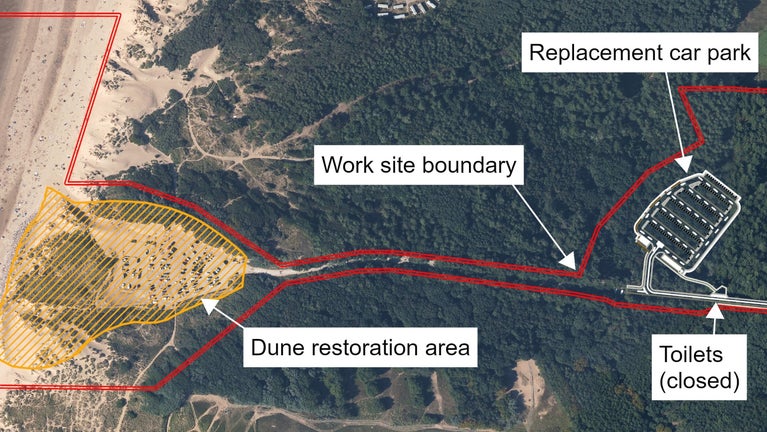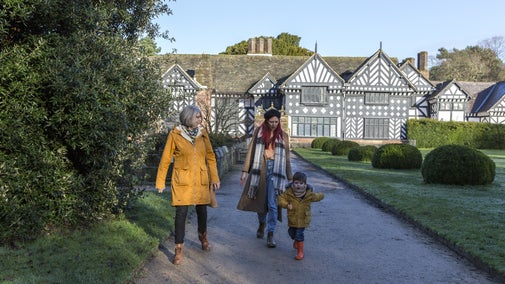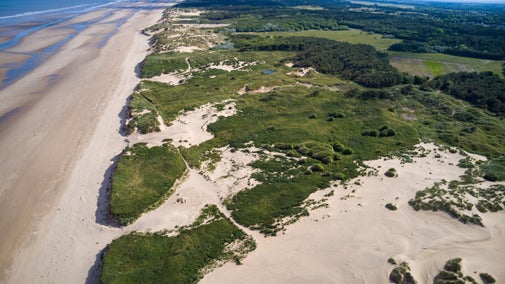Benefits for wildlife and people
This conservation work will create a healthy, connected, mobile dune habitat where wildlife can thrive and a safer more natural space for everyone to enjoy.
Listen to the BBC Radio 4 Open Country "Shifting Sands of Sefton" featuring rangers Bree and Justin talking to Martha Kearney about the Victoria Road conservation project and the exciting moment where they spot a rare sand lizard basking in the dunes.
Watch the latest ITV Granada news report on the project progress featuring Ranger Chris and Laura our Community and Engagement Manager.
What's the latest?
To enable us to carry out this important work the car park and toilets at Victoria Road are closed until spring 2026. Visitors are advised not to travel to us by car on sunny days.
We’ve reached a major milestone in our conservation work at Victoria Road—with over 80,000 tonnes of rubble now removed from the dunes and beach. This was a huge undertaking with the large work site area divided into sections. The rubble was methodically dug out and sorted. Healthy top sand was stockpiled for reuse, metal recycled, and rubble repurposed—some smaller pieces were moved directly to the replacement car park site with the rest needing to be crushed first.
Now, with most of the rubble gone, we’re working with dune experts to shape the landscape, placing the stockpiled sand to mimic natural dune contours and help kickstart ecological processes. It may look a bit stark for now, but nature is resilient. We’ll support its return by placing brushwood fencing to trap wind-blown sand and, if needed, plant marram grass to help stabilise areas of the new dunes.
Meanwhile, work will continue on the replacement car park. We're also mapping out new walking routes, installing new signs and infrastructure to help you find your way as well as protecting the dune habitat during the restoration process.
The work site area remains fenced off - please keep dogs on leads if walking nearby. There is no pedestrian access to the beach through the Victoria Road car park and work site area.
We’re continuing to work closely with partners along the Sefton Coast to manage the challenges busy days can bring. Thank you for your support and understanding whilst we enhance this special place for people and wildlife.
You can find out more about about the tasks involved in the project and the sand dune restoration process here
Regular updates will be shared on our website and social media. You can also sign up to receive regular project news bulletins by email click here








